کتاب مقدمه ای بر فرمولاسیون و تکنولوژی لوازم آرایشی، یک مرجع آموزشی شفاف، ساده و قابل درک در مورد فرمولاسیون لوازم آرایشی و بهداشتی و محصولات دارویی-آرایشی بدون نسخه (OTC) است. این کتاب ابتدا مفاهیم و اصطلاحات کلیدی را آموزش داده و در پایان هر بخش به مرور و بررسی سوالات و واژه نامه اصطلاحات می پردازد. از جمله مباحث کلیدی این کتاب می توان به موارد زیر اشاره کرد.
• بررسی عملکردها، طراحی محصول، فرمولاسیون و توسعه، و کنترل کیفیت مواد آرایشی
• بحث درباره دانش فیزیولوژیکی، دارویی و فرمولاسیون محصولات مراقبتی آرایشی
• مروری بر اصطلاحات و تعاریف اساسی مورد استفاده در صنعت آرایشی و بهداشتی و ارائه یک نمای کلی از قوانین نظارتی در ایالات متحده آمریکا
• آموزش مفاهیم کلیدی، و اصطلاحات کلیدی در ابتدا و بررسی سوالات و واژه نامه اصطلاحات در پایان هر بخش
Content:
General Concepts
Section 1: Basic Definitions
Learning Objectives
Key Concepts
What is Cosmetic Science?
Basic Definitions
How is a Product’s Intended Use Established in the United States?
Popular Cosmetic Claims
A Special Category: Soap
Glossary of Terms for Section
Review Questions for Section
References
Section 2: Classification of Cosmetics and OTC Drug–Cosmetic Products.
Cosmetic Ingredients and Active Ingredients used in Cosmetics and OTC
Drug–Cosmetic Products
Learning Objectives
Key Concepts
Classification of Cosmetics and OTC Drug–Cosmetic Products
Major Ingredient Types in Cosmetics and OTC Drug–Cosmetic Products
and their Functions
Glossary of Terms for Section 2
Review Questions for Section 2
References
Section 3: Dosage Forms for Cosmetics and OTC Drug–Cosmetic
Products
Learning Objectives
Key Concepts
What is a Dosage Form?
Dosage Forms for Cosmetic Applications
Glossary of Terms for Section 3
Review Questions for Section 3
References
Legislation for Cosmetics and OTC Drug–Cosmetic Products
Section 1: Current Rules and Regulations for Cosmetics and OTC
Drug–Cosmetic Products in the United States and European Union
Learning Objectives
Key Concepts
Introduction
Regulation in the United States
Regulation in the European Union
Import of Products
Recalls,
Glossary of Terms for Section 1
Review Questions for Section 1
References
Section 2: Labeling Tutorial for Cosmetics and OTC Drug–Cosmetic
Products Marketed in the United States
Learning Objectives
Key Concepts
Introduction
Definitions
Cosmetic Products
OTC Drug–Cosmetic Products
INCI Naming
How do you Know the Exact Composition of a Cosmetic Product or OTC
Drug–Cosmetic Product?
Glossary of Terms for Section 2
Review Questions for Section 2
References
Section 3: Government and Independent Organizations in the Cosmetic
Industry
Learning Objectives
Key Concepts
Introduction
Food and Drug Administration
Center for Food Safety and Applied Nutrition
Center for Drug Evaluation and Research
Personal Care Product Council
Cosmetic Ingredient Review Panel
Federal Trade Commission
European Commission
Scientific Committee on Consumer Safety
Cosmetics Europe – the Personal Care Association
Glossary of Terms for Section 3
Review Questions for Section 3
References
Section 4: Cosmetic Good Manufacturing Practices
Learning Objectives
Key Concepts
Cosmetic Good Manufacturing Practices
Glossary of Terms for Section 4
Review Questions for Section 4
References
3. Skin Care Products
Introduction
Section 1: Skin Anatomy and Physiology
Learning Objectives
Key Concepts
Introduction
Structure and Function of Human Skin
Epidermis
Dermis
Hypodermis
Moisture Content of Normal Skin
Skin Flora and Skin pH
Surface Charge of Normal Skin
Skin Types
Skin Types Based on Hydration State and Lipid Content
Skin Types Based on Gender
Glossary of Terms for Section 1
Review Questions for Section 1
References
Section 2: Skin Cleansing Products
Learning Objectives
Key Concepts
Introduction
Types and Definition of Skin Cleansing Products
History of Using Skin Cleansing Products
How Skin Cleansing Products May Affect the Skin?
Required Qualities and Characteristics and Consumer Needs
Cleansing Products – Basic Concepts
Classification Based on Chemical Nature and Mildness
Classification Based on Cleaning Principle
Classification Based on Foamability
Classification Based on Product Types
Typical Ingredients and Formulation of Skin Cleansing Products
Face
Body
Hand
Considerations When Selecting Skin Cleansing Products
Typical Quality Problems of Skin Cleansing Products
Evaluation of Skin Cleansing Products
Quality Parameters Generally Tested
Efficacy (Performance) Parameters Generally Tested
Ingredients Causing Safety Concerns
Packaging of Skin Cleansing Products
Glossary of Terms for Section 2
Review Questions for Section 2
References
Section 3: Skin Moisturizing Products
Learning Objectives
Key Concepts
Introduction
Types and Definition of Skin Moisturizers
History of Using Skin Moisturizers
How Skin Moisturizers May Affect the Skin?
Required Qualities and Characteristics and Consumer Needs
Typical Ingredients and Formulation of Skin Moisturizers
Considerations When Selecting Skin Moisturizers
Typical Quality Issues of Skin Moisturizer Formulations
Evaluation of Skin Moisturizing Products
Packaging of Skin Moisturizers
Glossary of Terms for Section 3
Review Questions for Section 3
References
Section 4: Products for Special Skin Concerns – Aging and Acne
Learning Objectives
Key Concepts
Introduction
Part 1: Anti-Aging Products
Drug or Cosmetic?
Typical Ingredients Used in Topical Anti-Aging Products
Formulation Considerations for Topical Anti-Aging Products
Formulation Challenges for Common Anti-Aging Ingredients
Safety Issues Regarding the Use of Topical Non-invasive Anti-Aging Ingredients,
Part 2: Anti-Acne Products
Causes of Acne and Potential Exacerbating Factors
Symptoms and Types of Acne Vulgaris
Treatment of Acne Vulgaris
Formulation Considerations
Ingredients Causing Safety Concerns
Glossary of Terms for Section 4
Review Questions for Section 4
References
Section 5: Sun Care Products
Learning Objectives
Key Concept
Introduction
Sun Protection Basics
Sun Protection Factor (SPF)
Broad-Spectrum Protection
Water Resistance
Effects of Ultraviolet Radiation on the Human Body
Types and Definition of Sun Care Products
History of Using Sun Care Products
Required Qualities and Characteristics and Consumer Needs
Sunscreens
UV Filters
Additional Ingredients of Sunscreens
Product Forms
Optimizing Product Efficacy and Consumer Acceptance
After-Sun Preparations
Typical Quality Problems of Sun Care Products
Evaluation of Sun Care Products
Packaging of Sun Care Products
Glossary of Terms for Section 5
Review Questions for Section 5
References
Section 6: Deodorants and Antiperspirants
Learning Objectives
Key Concepts
Introduction
Anatomy and Physiology of Human Sweat Glands
Types and Definition of Products Reducing Body Odor
History of Using Deodorants and Antiperspirants
How Deodorants and Antiperspirants May Affect the Human Skin and Body?
Required Qualities and Characteristics and Consumer Needs,
Types of Ingredients, Product Forms, and Formulation of Deodorants and Antiperspirants
Typical Quality Problems of Deodorants and Antiperspirants
Evaluation of Deodorants and Antiperspirants
Packaging of Deodorants and Antiperspirants
Glossary of Terms for Section 6
Review Questions for Section 6
Reference
Color Cosmetics
Introduction
Section 1: Lip Makeup Products
Learning Objectives
Key Concepts
Introduction
Anatomy and Physiology of Human Lips
History of Using Lip Makeup Products
Types and Definition of Lip Makeup Products
How Lip Makeup Products May Affect the Human Lips?
Required Qualities and Characteristics and Consumer Needs
Typical Ingredients of Lip Makeup Products
Typical Lipstick Type
Formulation of Lip Makeup Products
Typical Quality Problems of Lip Makeup Products
Evaluation of Lip Makeup Products
Packaging of Lip Makeup Products
Glossary of Terms for Section 1
Review Questions for Section 1
References
Section 2: Eye Makeup Products
Learning Objectives
Key Concepts
Introduction
Anatomy and Physiology of Human Eyelids and Eyelashes
History of Using Eye Makeup Products
Types and Definition of Eye Makeup Products
How Eye Makeup Products May Affect the Eye Area?
Required Qualities and Characteristics and Consumer Needs
Typical Ingredients and Formulation of Eye Makeup Products
Typical Quality Problems of Eye Makeup Products
Evaluation of Eye Makeup Products
Packaging of Eye Makeup Products
Glossary of Terms for Section 2
Review Questions for Section 2
Reference
Section 3: Facial Makeup Products
Learning Objectives
Key Concepts
Introduction
Types and Definition of Facial Makeup Products
History of Using Facial Makeup Products
How Facial Makeup Products May Affect the Skin?
Required Qualities and Characteristics and Consumer Needs
Typical Ingredients and Formulation of Facial Makeup Products
Powder Makeup Products for the Face
Typical Quality Problems of Facial Makeup Products
Evaluation of Facial Makeup Products
Packaging of Facial Makeup Products
Glossary of Terms for Section 3
Review Questions for Section 3
References
Section 4: Nail Care Products
Learning Objectives
Key Concepts
Introduction
Anatomy and Physiology of Human Nails
History of Using Nail Care Products
Types and Definition of Nail Care Products
How Nail Care Products May Affect the Human Nails?
Required Qualities and Characteristics and Consumer Needs
Functional Nail Care Products
Typical Quality Problems of Nail Care Products
Evaluation of Nail Care Products
Packaging of Nail Care Products
Glossary of Terms for Section 4
Review Questions for Section 4
References
5. Hair Care Products
Introduction
Section 1: Hair Anatomy and Physiology
Learning Objectives
Key Concepts
Introduction
Structure and Function of Human Hair
Hair Growth Cycle and Hair Loss
Chemical Composition of Human Hair
Physical Properties of Human Hair
Hair Weathering
Hair Types
Glossary of Terms for Section 1
Review Questions for Section 1
References
Section 2: Hair Cleansing and Conditioning Products
Learning Objectives
Key Concepts
Introduction
Types and Definition of Hair Cleansing and Conditioning Products
History of Using Shampoos and Hair Conditioning Products
How Hair Cleaning and Conditioning Products May Affect the Hair
and Scalp?
Required Qualities and Characteristics and Consumer Needs
Hair Cleansing Products
Hair Conditioners
Types of Conditioners
Typical Quality Problems of Shampoos and Hair Conditioners
Evaluation of Shampoos and Hair Conditioners
Packaging of Shampoos and Hair Conditioners
Glossary of Terms for Section 2
Review Questions for Section 2
References
Section 3: Hair Styling Products, Hair Straightening Products
and Hair Waving Products
Learning Objectives
Key Concepts
Introduction
Types and Definition of Hair Styling Products, Hair Straightening
Products, and Hair Waving Products
History of Using Hair Styling Products
How Hair Styling Products and Procedures May Affect the Human Hair and Scalp?
Required Qualities and Characteristics and Consumer Needs
Hair Styling Formulations
Hair Styling Procedures
Typical Quality Problems of Hair Styling Products
Evaluation of Hair Styling Products
Glossary of Terms for Section 3
Review Questions for Section 3
References
Section 4: Hair Coloring Products
Learning Objectives
Key Concepts
Introduction
Types and Definition of Hair Coloring Products
History of Using Hair Coloring Products
How Hair Coloring Products May Affect the Scalp and Hair?
Required Qualities and Characteristics and Consumer Needs
Current US Regulation on Hair Dyes
Types, Typical Ingredients, and Formulation of Hair Coloring Products
Typical Quality Problems of Hair Coloring Products
Evaluation of Hair Coloring Products
Packaging of Hair Coloring Products
Glossary of Terms for Section 4
Review Questions for Section 4
References
6. Oral and Dental Care Products
IntroductionLearning Objectives
Key Concepts
Anatomy and Physiology of the Human Oral Cavity
Brief Review of the Most Common Oral and Dental Care Problems
History of Using Oral and Dental Care Products
Types and Definition of Oral and Dental Care Products
How Oral and Dental Care Products May Affect the Teeth and the Oral Cavity?
Required Qualities and Characteristics and Consumer Needs,
Toothpaste
Ingredients
Rheology of Toothpaste Formulations
Formulation of Toothpaste
Mouthwash
Ingredients
Formulation of Mouthwash
Other Products
Tooth Whitening Aids
Tooth Powders
Dental Floss
Typical Quality Problems of Oral and Dental Care Products
Hardening
Inappropriate Viscosity
Grittiness
Cloudy Solution
Evaluation of Dental and Oral Care Products
Quality Parameters Generally Tested
Efficacy (Performance) Parameters Generally Tested
Ingredients Causing Safety Concern
Packaging of Dental and Oral Care Products
Glossary of Terms for Chapter 6
Review Questions for Chapter 6
References
7. Other Products
Introduction
Section 1: Hair Removal Products
Learning Objectives
Key Concepts
Introduction
Brief Review of the Structure and Function of Human Hair
History of Using Hair Removal Products
Possible Methods for Removing Hair
Types and Definition of Hair Removal Products
How Hair Removal Products May Affect the Skin and Hair?
Required Qualities and Characteristics and Consumer Needs
Product Types, Typical Ingredients, and Formulation of Hair Removal Products
Typical Quality Problems of Hair Removal Products
Evaluation of Hair Removal Products
Packaging of Hair Removal Products
Glossary of Terms for Section 1
Review Questions for Section 1
References
Section 2: Baby Care Products
Learning Objectives
Key Concepts
Introduction
Anatomical and Physiological Differences between Baby and Adult Skin and Hair
Types and Definition of Baby Care Products
History of Using Baby Care Products
How Baby Care Products May Affect Baby Skin and Hair?
Required Qualities and Characteristics and Consumer Needs, Types, Typical Ingredients, and Formulation of Baby Care Products
Typical Quality Problems of Baby Care Products
Evaluation of Baby Care Products
Packaging of Baby Care Products
Glossary of Terms for Section 2
Review Questions for Section 2
References
Section 3: Sunless Tanning Products
Learning Objectives
Key Concepts
Introduction
Types and Definition of Sunless Tanning Products
History of Using Sunless Tanning Products
Required Qualities and Characteristics and Consumer Needs
How Sunless Tanners May Affect the Human Body?
Sunless Tanning Products
Formulation Concerns
Typical Quality Problems of Sunless Tanning Products
Evaluation of Sunless Tanning Products
Packaging of Sunless Tanning Products
Glossary of Terms for Section 3
Review Questions for Section 3
References
Section 4: Feminine Hygiene Products
Learning Objectives
Key Concepts
Introduction
Anatomy and Physiology of the Female Genital Area
Types and Definition of Feminine Hygiene Products
History of Using Feminine Hygiene Products
How Feminine Hygiene Products May Affect the Human Body and
Genital Area?
Required Qualities and Characteristics and Consumer Needs, Types, Typical Ingredients, and Formulation of Feminine Hygiene Products
Typical Quality Problems of Feminine Hygiene Products
Evaluation of Feminine Hygiene Products
Packaging of Feminine Hygiene Products
Glossary of Terms for Section 4
Review Questions for Section 4
References
Key for Review Questions
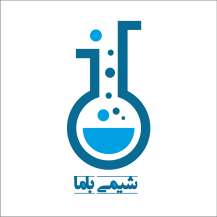
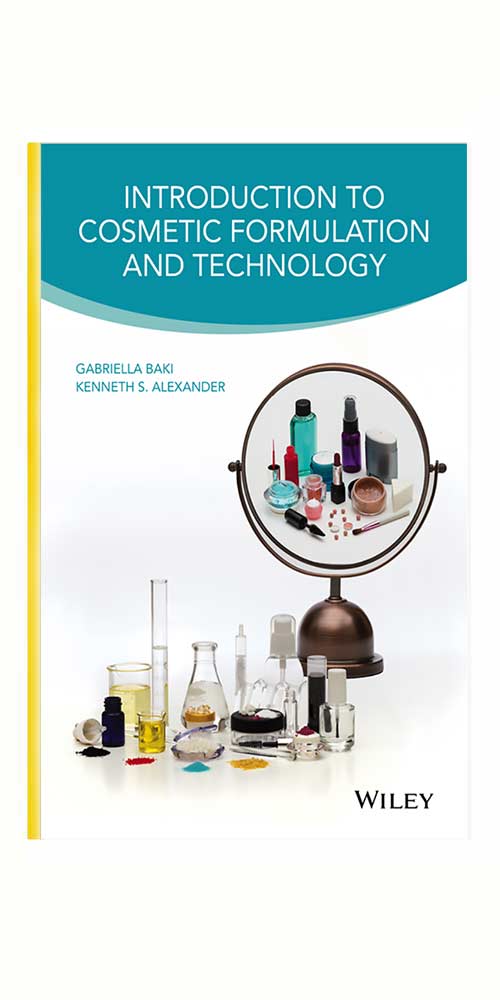
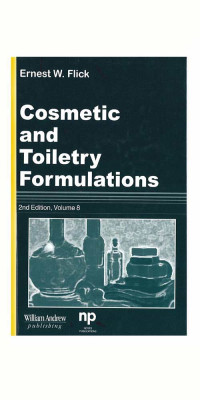
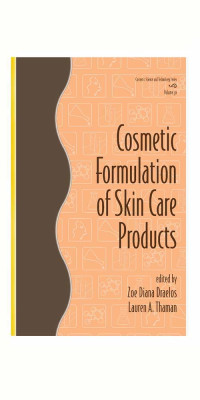
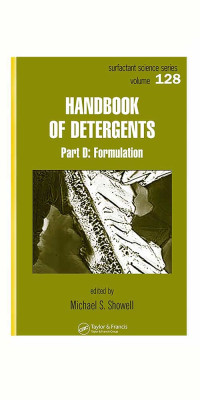
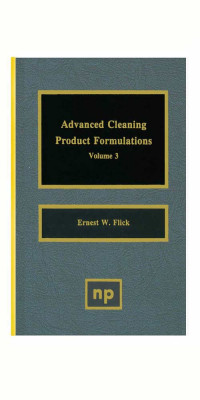

نقد و بررسیها
هنوز بررسیای ثبت نشده است.